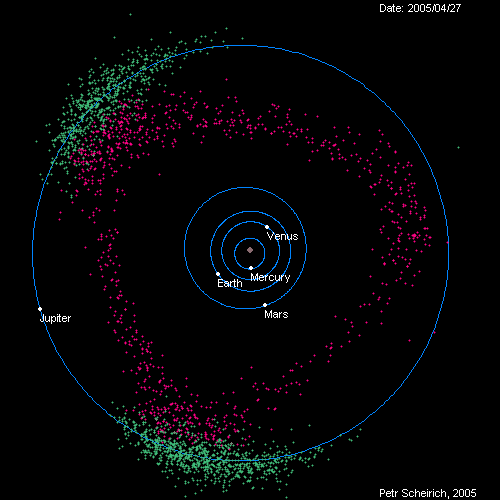“It Sounds Far Fetched Even For The Plot Of A Sci-fi Film.




“It sounds far fetched even for the plot of a sci-fi film.
NASA scientists have proposed a radical idea to launch a magnetic field around Mars, with hopes it could protect the red planet from intense solar wind and allow humans to explore alongside rovers.
Jim Green, NASA’s Planetary Science Division Director, revealed the idea today at the Planetary Science Vision 2050 Workshop in Washington DC…
The proposal would create a dipole field –a pair of equal and oppositely charged magnets – in an orbit between Mars and the sun, at a point known as Mars L1.
This ‘artificial magnetic field’ would put Mars inside a ‘magnetotail,’ protecting it from the harsh solar wind.
Without the barrage of high-energy particles, Mars’ atmosphere would begin to rebuild itself over time.
In just a matter of years, the simulations show the planet could achieve an ‘Earth comparable field.’
Increasing the pressure would cause the equator to heat up, leading the polar cap to collapse, Green says…"
Source: http://www.dailymail.co.uk/sciencetech/article-4276210/NASA-unveils-plan-surround-Mars-magnetic-field.html?ITO=applenews
More Posts from Fillthevoid-with-space and Others

Galaxy NGC 7714 After Collision : Is this galaxy jumping through a giant ring of stars? Probably not. Although the precise dynamics behind the featured image is yet unclear, what is clear is that the pictured galaxy, NGC 7714, has been stretched and distorted by a recent collision with a neighboring galaxy. This smaller neighbor, NGC 7715, situated off to the left of the featured frame, is thought to have charged right through NGC 7714. Observations indicate that the golden ring pictured is composed of millions of older Sun-like stars that are likely co-moving with the interior bluer stars. In contrast, the bright center of NGC 7714 appears to be undergoing a burst of new star formation. NGC 7714 is located about 100 million light years away toward the constellation of the Fish . The interactions between these galaxies likely started about 150 million years ago and should continue for several hundred million years more, after which a single central galaxy may result. via NASA
js

The hardest part of determining longitude was figuring out how sailors could find their longitudinal coordinates at sea. There were a lot of methods proposed but adding a ship into the equation makes precision difficult. Learn about the Longitude Act of 1714 and how, even though this podcast loves astronomy, the astronomical method might not always be the best option.
Below the cut are my sources, music credits, a timeline of the astronomers and engineers and clockmakers I mention, a vocab list, a really cool resource that lets you drag continents all over a flattened map of Earth to compare their sizes at different latitudes, and the transcript of this episode. Let me know what you think I should research next by messaging me here, tweeting at me at @HDandtheVoid, or asking me to my face if you know me in real life. And please check out the podcast on iTunes, rate it or review it if you’d like, subscribe, and maybe tell your friends about it if you think they’d like to listen!
(My thoughts on the next episode were the Voyager golden records, space race history, the transit of Venus, or maybe something about the Moon landing. I’m loving Edmond Halley again these days, too. I’m prepping to interview a friend about her graduate-level research into the history of the universe and possibly dark matter, too. Let me know by the 20th and I’ll hopefully have the next podcast up on September 25th! If not then, I’ll push for October 2nd.)
Glossary
azimuth - a section of the horizon measured between a fixed point and the vertical circle passing through the center of an object. See example in the link.
equator - Earth’s zero line of latitude. It’s the place on Earth where the Sun is directly overhead at noon on the vernal and autumnal equinoxes.
kamal - an Arabic navigation tool consisting of a knotted string and a piece of wood. A navigator would tie a knot in the string and, by holding it in their teeth, sight the North Star along the top of the wooden piece and the horizon along the bottom. To return home, the navigator would sail north or south to bring Polaris to the altitude they had observed in their home port, then turn left or right and sail down the latitude, keeping Polaris at a constant angle. Over time, Arab navigators started tying knots at regular intervals of a fingerwidth, called an issbah, that’s about 1 degree and 36 minutes.
magnetosphere - an invisible barrier that surrounds a celestial objet. It is often generated by the movement of the liquid metal core of the object. Around a planet, it deflects high-energy, charged particles called cosmic rays that can either come from the Sun or, less often, from interstellar space.
prime meridian - Earth’s zero degree of longitude. In current maps and time zones, this invisible, imaginary line runs through London, England.
sextant - a device used to determine an observer’s location based on the observation of a known celestial object and a lot of calculation. It is still in use by sailors.
tropic of cancer - a line of latitude that marks where the Sun will be at noon on the summer solstice.
tropic of capricorn - a line of latitude that marks where the Sun will be at noon on the winter solstice.
Script/Transcript
Sources
Longitude at Sea via The Galileo Project at Rice University
Vitamin C necessity via University of Maryland Medical Center
Scurvy via NHS
Scurvy via the Encyclopedia Britannica online
An interactive map that shows how our current map distorts land masses by letting you compare different countries’ sizes.
Sobel, Dava. Longitude. Walker & Co.; New York, 1995.
“anyone living below the Equator would melt into deformity from the horrible heat” (3).
“It simply urged Parliament to welcome potential solutions from any field of science or art, put forth by individuals or groups of any nationality, and to reward success handsomely” (53).
Timeline
Claudius Ptolemy, Greek (100-170 CE)
Johannes Werner (in Latin, Ioannis Vernerus), German (1468-1522)
Tycho Brahe, Danish (1541-1601)
Galileo Galilei, Italian (1564-1642)
Giovanni Cassini (in French, Jean-Dominique Cassini), Italian/French (1625-1712)
Christiaan Huygens, Dutch (1629-1695)
Sir Isaac Newton, English (1642-1726/7)
Ole Rømer, Danish (1644-1710)
John Flamsteed, English (1646-1719)
Edmond Halley, English (1656-1742)
John Hadley, English (1682-1744)
John Harrison, English (1693-1776)
Thomas Godfrey, American (1704-1749)
John Bird, English (1709-1776)
Larcum Kendall, English (1719-1790)
James Cook, English (1728-1779)
Nevil Maskelyne, English (1732-1811)
John Arnold, English (1736-1799)
Thomas Earnshaw, English (1749-1829)
Intro Music: ‘Better Times Will Come’ by No Luck Club off their album Prosperity
Outro Music: ‘Fields of Russia’ by Mutefish off their album On Draught
What is an upcoming project/mission you're most excited for?
It is likely that I’ll be assigned a mission to the International Space Station (ISS) within the next few years. We’ve had a continuous presence on the Space Station for 17 years now, along with our international partners (Russian Space Agency, European Space Agency, Japanese Space Agency, and Canadian Space Agency). Missions on the ISS typically last 6 months. I’m incredibly excited to contribute to the impressive array of scientific experiments that we are conducting every day on ISS (I am a scientist after all!), and very much look forward to the potential of going for a spacewalk and gaining that perspective of gazing down on the fragile blue ball that is our home from above. Beyond that, being part of test missions on the Orion spacecraft (currently under construction at NASA!) would be an extraordinary opportunity. The current NASA plan is to send astronauts in Orion in a mission that will go 40,000 miles beyond the Moon in the early 2020s, reaching a distance further than that ever travelled by humans. I’d certainly be game for that!


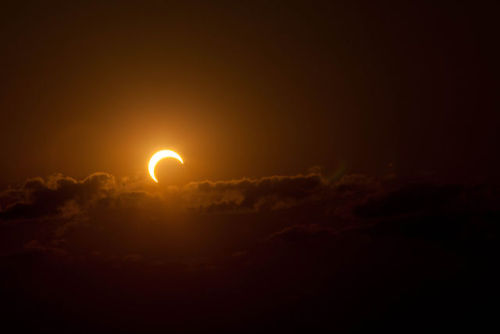

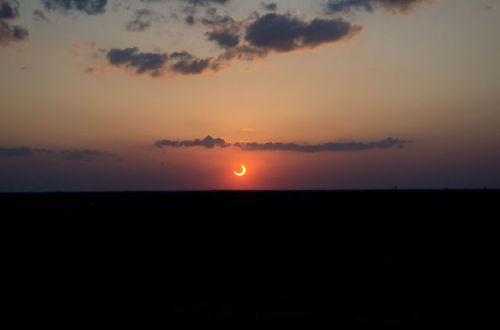


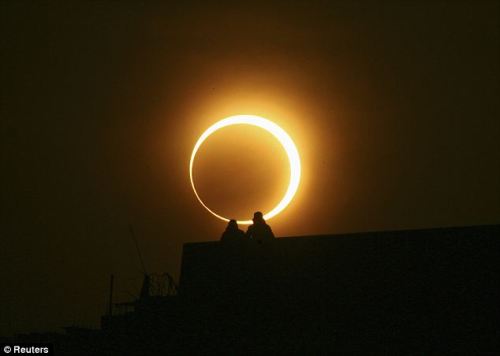
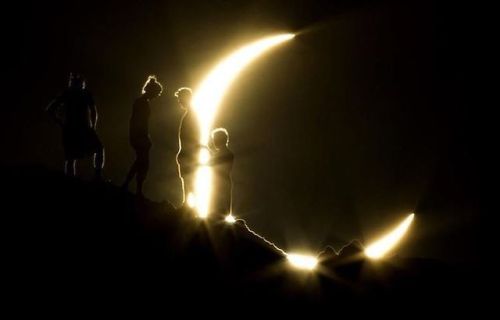
A ‘Ring of Fire’ solar eclipse is a rare phenomenon that occurs when the moon’s orbit is at its apogee: the part of its orbit farthest away from the Earth. Because the moon is so far away, it seems smaller than normal to the human eye. The result is that the moon doesn't entirely block out our view of the sun, but leaves an “annulus,” or ring of sunlight glowing around it. Hence the term “annular” eclipse rather than a “total” eclipse.
The Yutu rover suffered a mysterious “abnormality” over the weekend. And the robot’s microblogged death note may make you cry.
oh gosh!










Cassini prepares for final orbital “Grand Finale” at Saturn.
Erik Wernquist, the same filmmaker who created 2014’s “Wanderers” and a stunning New Horizons promotional film in 2015, has created a new video highlighting NASA’s Cassini mission’s final days at Saturn. The Cassini spacecraft will begin its final series of orbits to cap a 13-year groundbreaking science mission known as the Grand Finale. For the first time ever in Cassini’s time at Saturn, the spacecraft will fly in between the planet’s rings and atmosphere. No spacecraft has ever before flown in this region of any of the solar system’s ringed planets. After 20 orbits, Cassini will dive into Saturn’s upper atmosphere September 15 where it will be destroyed. In 2008, mission managers explored a range of End of Mission scenarios that would protect Saturn’s moon’s from Earthly contaminants before ultimately deciding on atmospheric reentry. Cassini began her End of Mission manoeuvres on November 26, 2016, when it began the first of 20 ring-grazing orbits. A close flyby of Titan April 22 will alter the spacecraft’s trajectory to begin the first of 23 orbits in the Grand Finale, which will begin April 26.

Cassini launched from Earth on October 20, 1997, and entered Saturn orbit July 1, 2004. 16 days later, the European-built Huygens probe attached to the spacecraft landed on Titan, becoming the first probe to land in the outer solar system. Originally scheduled for a four-year mission ending in 2008, Cassini received two mission extensions in 2008 and 2010, with the latter ending in 2017. With the spacecraft’s fuel reserves low, the Cassini team decided to end the mission. P/C: JPL/Erik Wernquist

No matter where you hang your stockings, I wish you a very Merry Christmas!

Light Echoes Used to Study Protoplanetary Disks : This illustration shows a star surrounded by a protoplanetary disk. A new study uses data from NASAs Spitzer Space Telescope and four ground-based telescopes to determine the distance from a star to the inner rim of its surrounding protoplanetary disk. Researchers used a method called photo-reverberation, also known as light echoes.
js
-
 ultrawiccanmikeposts liked this · 7 years ago
ultrawiccanmikeposts liked this · 7 years ago -
 praetorianknigh liked this · 7 years ago
praetorianknigh liked this · 7 years ago -
 neuvirtualoasis reblogged this · 7 years ago
neuvirtualoasis reblogged this · 7 years ago -
 thesopelimers liked this · 7 years ago
thesopelimers liked this · 7 years ago -
 mizziix reblogged this · 7 years ago
mizziix reblogged this · 7 years ago -
 ssilverstreak liked this · 7 years ago
ssilverstreak liked this · 7 years ago -
 mayatuks-catastrophe reblogged this · 7 years ago
mayatuks-catastrophe reblogged this · 7 years ago -
 mayatuks-catastrophe liked this · 7 years ago
mayatuks-catastrophe liked this · 7 years ago -
 cappucino-commie reblogged this · 7 years ago
cappucino-commie reblogged this · 7 years ago -
 nap66 liked this · 7 years ago
nap66 liked this · 7 years ago -
 wondering-slave reblogged this · 7 years ago
wondering-slave reblogged this · 7 years ago -
 wondering-slave liked this · 7 years ago
wondering-slave liked this · 7 years ago -
 ghozt3 liked this · 7 years ago
ghozt3 liked this · 7 years ago -
 textbookmobster liked this · 7 years ago
textbookmobster liked this · 7 years ago -
 sbeetacular liked this · 7 years ago
sbeetacular liked this · 7 years ago -
 dinunca reblogged this · 8 years ago
dinunca reblogged this · 8 years ago -
 chrl9 reblogged this · 8 years ago
chrl9 reblogged this · 8 years ago -
 androckingandfuckingrolling reblogged this · 8 years ago
androckingandfuckingrolling reblogged this · 8 years ago -
 cabeto89-blog liked this · 8 years ago
cabeto89-blog liked this · 8 years ago -
 codegnave liked this · 8 years ago
codegnave liked this · 8 years ago -
 blue-jacket reblogged this · 8 years ago
blue-jacket reblogged this · 8 years ago -
 epyonac reblogged this · 8 years ago
epyonac reblogged this · 8 years ago -
 thedarkunknownmind reblogged this · 8 years ago
thedarkunknownmind reblogged this · 8 years ago -
 thedarkunknownmind liked this · 8 years ago
thedarkunknownmind liked this · 8 years ago -
 rametarin liked this · 8 years ago
rametarin liked this · 8 years ago -
 neurosquared liked this · 8 years ago
neurosquared liked this · 8 years ago -
 retro-prime liked this · 8 years ago
retro-prime liked this · 8 years ago -
 necrobob reblogged this · 8 years ago
necrobob reblogged this · 8 years ago -
 stephaniemoore001 liked this · 8 years ago
stephaniemoore001 liked this · 8 years ago -
 kiebitzen reblogged this · 8 years ago
kiebitzen reblogged this · 8 years ago -
 tanenwa liked this · 8 years ago
tanenwa liked this · 8 years ago -
 wardenaristraith liked this · 8 years ago
wardenaristraith liked this · 8 years ago -
 dangerouslysublimealpaca reblogged this · 8 years ago
dangerouslysublimealpaca reblogged this · 8 years ago -
 dangerouslysublimealpaca liked this · 8 years ago
dangerouslysublimealpaca liked this · 8 years ago -
 modestbirdwizard liked this · 8 years ago
modestbirdwizard liked this · 8 years ago -
 avkamfher reblogged this · 8 years ago
avkamfher reblogged this · 8 years ago -
 global-twilight reblogged this · 8 years ago
global-twilight reblogged this · 8 years ago -
 utot-atbp liked this · 8 years ago
utot-atbp liked this · 8 years ago -
 noxrynne reblogged this · 8 years ago
noxrynne reblogged this · 8 years ago -
 melodiousjustice reblogged this · 8 years ago
melodiousjustice reblogged this · 8 years ago
A podcast project to fill the space in my heart and my time that used to be filled with academic research. In 2018, that space gets filled with... MORE SPACE! Cheerfully researched, painstakingly edited, informal as hell, definitely worth everyone's time.
243 posts
